Private seed companies to play an active role in IMIC-LA
“Cooperation between the public and private sectors will be crucial to achieve the objectives of the International Maize Improvement Consortium for Latin America (IMIC-LA),” said Marc Rojas, IMIC-LA Leader. As one part of CIMMYT’s MasAgro initiative, IMIC aims to increase maize yields by 85 percent over the next 10 years, through the adoption of improved varieties by farmers, sustainable farming practices, and enhanced efficiency across the entire maize value chain.
During 23-25 November 2011, 36 representatives of seed companies and organizations met to discuss the potential contributions of private seed companies to IMIC-LA, and to learn how they can benefit from participating in MasAgro. The representatives came from many different areas of Mexico, and from organizations of varying sizes. “Through collaboration in the consortium, these small companies can become collectively competitive,” said Rojas, “this is vital if we are to achieve IMIC’s target of increasing the average maize production of Mexico’s rain fed areas from 2.2 tons/hectare to 3.7 tons/hectare,” he added.
The first two days of the workshop provided an opportunity for capacity building, specific to seed businesses. John MacRobert, CIMMYT Seed Systems Specialist, gave an overview of IMIC’s activities in Africa and Asia, and introduced the main aspects of the value chain of a seed business. Open communication allowed the group to identify many similarities between Africa and Latin America, and how lessons learnt within other projects could be applied to operations in Latin America. MacRobert also helped participants to pinpoint potential weaknesses in their businesses, and how these could be addressed. “Good seed must come with good planning,” said MacRobert, emphasizing that planning is key, particularly in anticipating the requirement for parent seed, and in ensuring budgeting prevents bottlenecks. Other factors to ensure success, such as production research and quality assurance, were reviewed by Manuel Velázquez, a Mexican seed sector specialist.
The many advantages that IMIC can provide to seed companies were highlighted during the meeting: diverse training, supply of pre-basic seed of identified final products, and collaborative evaluation networks. In return, participants are expected to provide input for market analyses and testing sites and products for the evaluation networks, as well as to produce and market high-quality seed. Ángelo Vera Gómez from the Federation of Maize Producers for the State of Mexico said that he sees MasAgro as a turning point: “It’s what we as producers have been waiting for; we would like that farmers’ experience can be combined with research, to take advantage of both aspects,” he said.
The third day of the workshop welcomed representatives from Mexico’s Ministry of Agriculture, Livestock, Rural Development, Fisheries and Food (SAGARPA) and the National Service for Seed Inspection and Certification (SNICS). Rojas stressed to participants that whilst IMIC does not provide funding for seed companies, once within the MasAgro program, it becomes easier for them to gain financial support from other government programs. Participants used this final day to plan work activities for the coming year and create a collaboration agreement; by the end of November, around 90 percent of participants are expected to have signed up to the consortium.
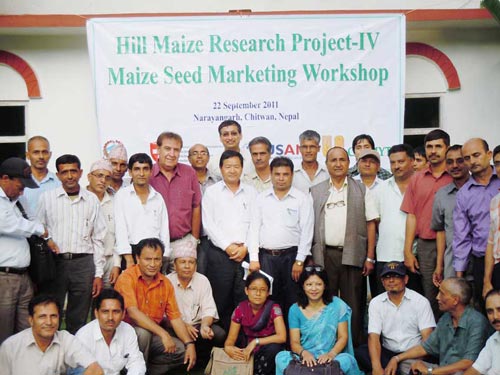
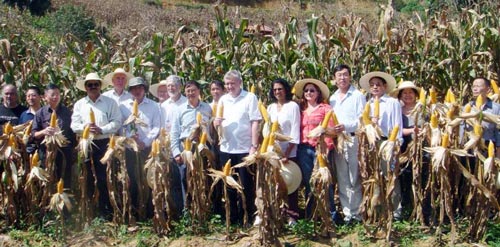
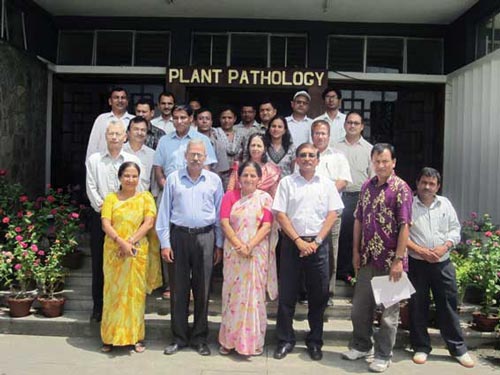
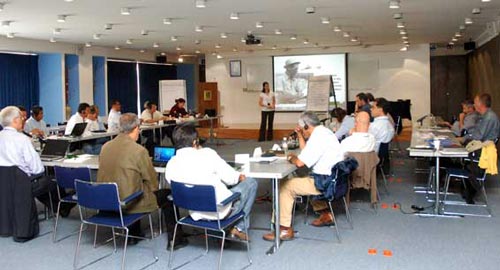
 Over 60 researchers, field technicians, farmers, machinery manufacturers, service providers, and extension workers attended two recent conservation agriculture (CA) training events in Bangladesh. The first event was held at the Bangladesh Agriculture Research Institute (BARI) station in Comilla on 28-29 April, followed by an event at the Wheat Research Centre of BARI in Dinajpur on 04-05 May. The events focused on machinery operation and maintenance, as well as the agronomy of dry direct-seeded rice (DSR). Both were part of joint CIMMYT-
Over 60 researchers, field technicians, farmers, machinery manufacturers, service providers, and extension workers attended two recent conservation agriculture (CA) training events in Bangladesh. The first event was held at the Bangladesh Agriculture Research Institute (BARI) station in Comilla on 28-29 April, followed by an event at the Wheat Research Centre of BARI in Dinajpur on 04-05 May. The events focused on machinery operation and maintenance, as well as the agronomy of dry direct-seeded rice (DSR). Both were part of joint CIMMYT-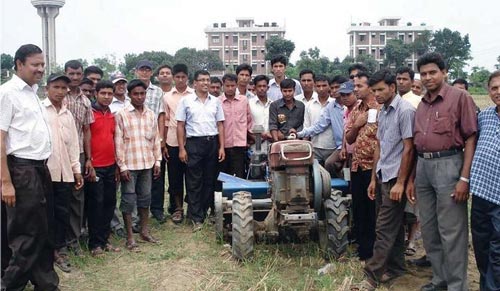 “Machinery operation and maintenance is vital for rapid dissemination of CA-based technologies,” said Jagadish Timsina, IRRI-CIMMYT senior cropping system agronomist. He added that this ACIAR-funded ricemaize project has been adapting and evaluating the PTOS and the bed former/planter at project sites, and has been refining these machines for their use in different soils with the help of agriculture engineers from the national agriculture research intuitions involved in the project. The project has given special emphasis to training and capacity building for machine use and has already trained more than 120 people from government and non-governmental organizations, as well as farmers, service providers, machinery manufacturers, and extension workers since it started in November 2008.
“Machinery operation and maintenance is vital for rapid dissemination of CA-based technologies,” said Jagadish Timsina, IRRI-CIMMYT senior cropping system agronomist. He added that this ACIAR-funded ricemaize project has been adapting and evaluating the PTOS and the bed former/planter at project sites, and has been refining these machines for their use in different soils with the help of agriculture engineers from the national agriculture research intuitions involved in the project. The project has given special emphasis to training and capacity building for machine use and has already trained more than 120 people from government and non-governmental organizations, as well as farmers, service providers, machinery manufacturers, and extension workers since it started in November 2008.